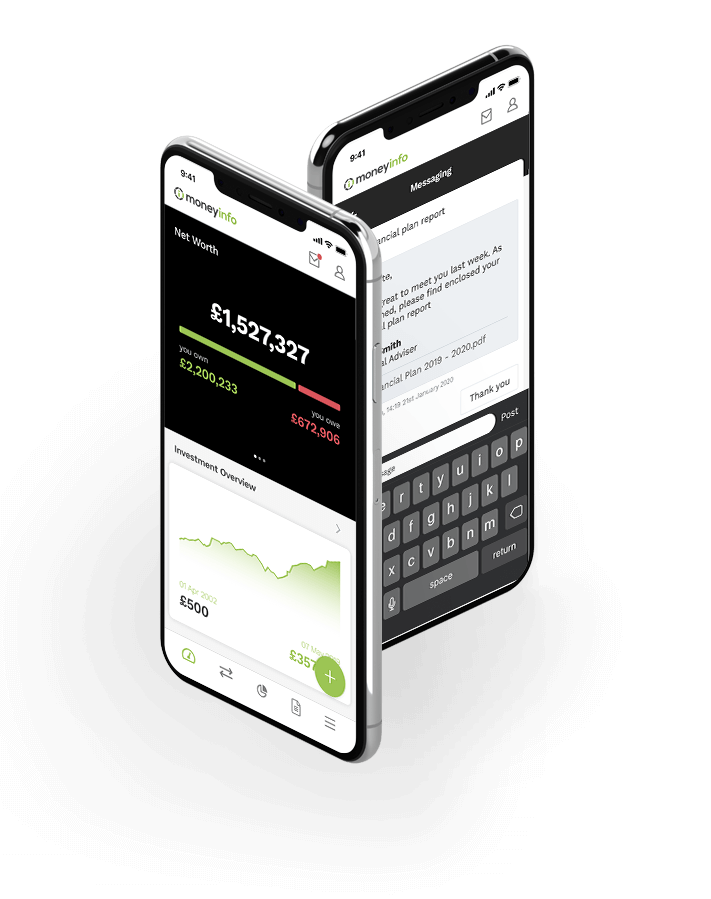40% of advisers onboard new clients with no technology support from their DFM
We recently conducted a research survey poll that was featured in FTAdviser’s technology column, where we asked 250 advisers about their experiences with DFMs to investigate their demands, desires, and dissatisfactions.
Read on to find the full research statistics, you can find the FTAdviser article here.
Why did we conduct this survey?
With new regulations settling in, and the increasing trend of adviser consolidation continuing, we sought to understand the current climate better, whilst considering where the industry is headed, and what it may mean for the future.
PROD, Consumer Duty and other regulatory requirements are placing suitability checks under ever-increasing scrutiny. Markets are volatile and costs are under pressure from all corners. For advisers, it is crucial the partnerships they have in place function in the most cost-effective and efficient way to demonstrate that they are helping clients achieve their desired outcomes.
The adviser-DFM relationship is central to delivering those outcomes, and with Consumer Duty fast approaching, we decided to investigate whether digital solutions are being sufficiently taken advantage of to provide advisers with full satisfaction across their firm.
As the trend for adviser consolidation builds, and the number of advisers buying in bespoke or template-based services from DFMs increases (According to NextWealth[1]) , the appetite for technology to ease those partnerships – in whichever guise it takes – will only head one way.
And our sense is that the opportunity to improve those relationships by using digital solutions is not being sufficiently exploited.
What did we find?
“The results were surprising.” said moneyinfo managing director, Tessa Lee, commenting on advisers’ feedback about their DFM arrangements:
“There was a clear disconnect between the glaring cost and time savings to be made, and a recognition that the right technology platform could help facilitate those savings.”
This was because according to the poll, 28% of advice firms have chosen to carry out business with a single DFM, a scenario we’d hope would mean they were fully satisfied with no room for improvement. Yet only 67% of clients updated client data automatically, with the remaining 33% carrying out valuations and other processes manually.
Updating client data manually is a laborious process that could be cut out entirely with automation. This is a low-hanging fruit opportunity for firms to not worry about, so they can effectively spend their time on other tasks such as developing their client relationships and marketing opportunities to benefit their business. The issue is, with a third of advisers still not automating their processes, they are unaware of what technology is capable of. Who knows what other business efficiency processes they are missing out on?
Advisers seemed mostly accepting of the ease with which they could onboard clients to a DFM, though only 28% enjoyed the benefits of a fully digital process with 40% receiving no technology support at all with onboarding. Despite this, 60% said it was “easy” or “very easy” and 34% were indifferent. Only 4% said they found the process difficult. For this industry, in 2022, we think we can do better.
Moreover, an overwhelming 76% cited tech-related issues as a source of frustration, with comments such as “too many humans”, “too many systems”, “badly connected”, “time consuming and arduous” and “lack of automation” all given as preventing advisers from better serving their clients or taking on more.
So where were the pinch points?
Service (33%), onerous paperwork (18%), poor UX (15%) and technical limitations (12%) were cited as the biggest sources of frustration among advisers outsourcing to a DFM. Systems that don’t integrate, lack of e-signatures, poor comparison capabilities on things as fundamental as valuations and still too many manual elements are all getting in the way.
So what would make advisers switch DFM?
Overwhelmingly -and despite the frustrations with technology and process - the two top reasons cited for moving platform were cost (30%) and performance (24%). When comparing DFMs, rather than selecting an offering based on management charges, where there is probably at best minor differences between providers, surely eliminating manual time spent and digitising wherever possible would enable significant cost savings irrespective of which provider the firms outsourced to?
Interestingly, while lower cost was the most cited reason for switching investment manager, it was not high up the reasons for choosing one in the first place. Perhaps related, was that having an existing relationship already in place came only second to performance track record as the reason for initially selecting a DFM. It seems then that this might be an indication that choices were made several years ago, when the market was different, with only a select number of providers to choose from and that now times have moved on.
“Poor service”, “poor performance”, “bad admin”, “poor reporting”, “paperwork heavy” were also factors that featured multiple times among the reasons cited why advisers had been driven to switch DFMs.
Our poll showed that technology, admin, automation and better reporting are the driving force for 38% of the market to move assets onto a DFM. This creates a huge opportunity for those investment managers getting those fundamentals working well. Perhaps now newer and better performing offerings have come to market more firms will take the opportunity to move assets.
Interestingly, a significant number of advisers suggest that new clients would be placed with a new DFM but our sense was that, things just weren’t quite bad enough for them to go to the effort of moving existing clients across.
Is that a reason to not look for a better option? Accepting the status quo is something we have always done, from our banks to utility providers, but challenging those incumbents if their service is sub-par – or offers a lot of room for improvement – is something we would strongly encourage.
Complacency is the enemy of progress
Throughout this year, we have seen the public make a stand against energy prices and change their providers to double-check the market is of use to them with the concern of being overcharged. If everybody is reviewing their contracts and second-guessing whether they are getting a valuable return, perhaps advisers will catch on to this trend and switch their DFMs to increase the performance and cost savings of their adapted technology.
If you’re a financial adviser or wealth manager looking to review your in-house technology, moneyinfo can help you to broaden your digital capability with free training, webinars, and ongoing support whilst using our platform. We offer a fully branded digital communication service including branded apps for Apple and Android. Its secure portal provides a holistic view of all a client’s wealth in one place.
To learn how moneyinfo helps you achieve enhanced client loyalty, improved profitability, compliance confidence and is future ready with proven client adoption, book a demo here.
 To find out how moneyinfo and your platform can automate your everyday processes for onboarding, client reviews and reporting click here to organise a personal demonstration.
To find out how moneyinfo and your platform can automate your everyday processes for onboarding, client reviews and reporting click here to organise a personal demonstration.
[1] https://www.nextwealth.co.uk/wp-content/uploads/2022/09/Nextwealth-FABB-report-2022.pdf

